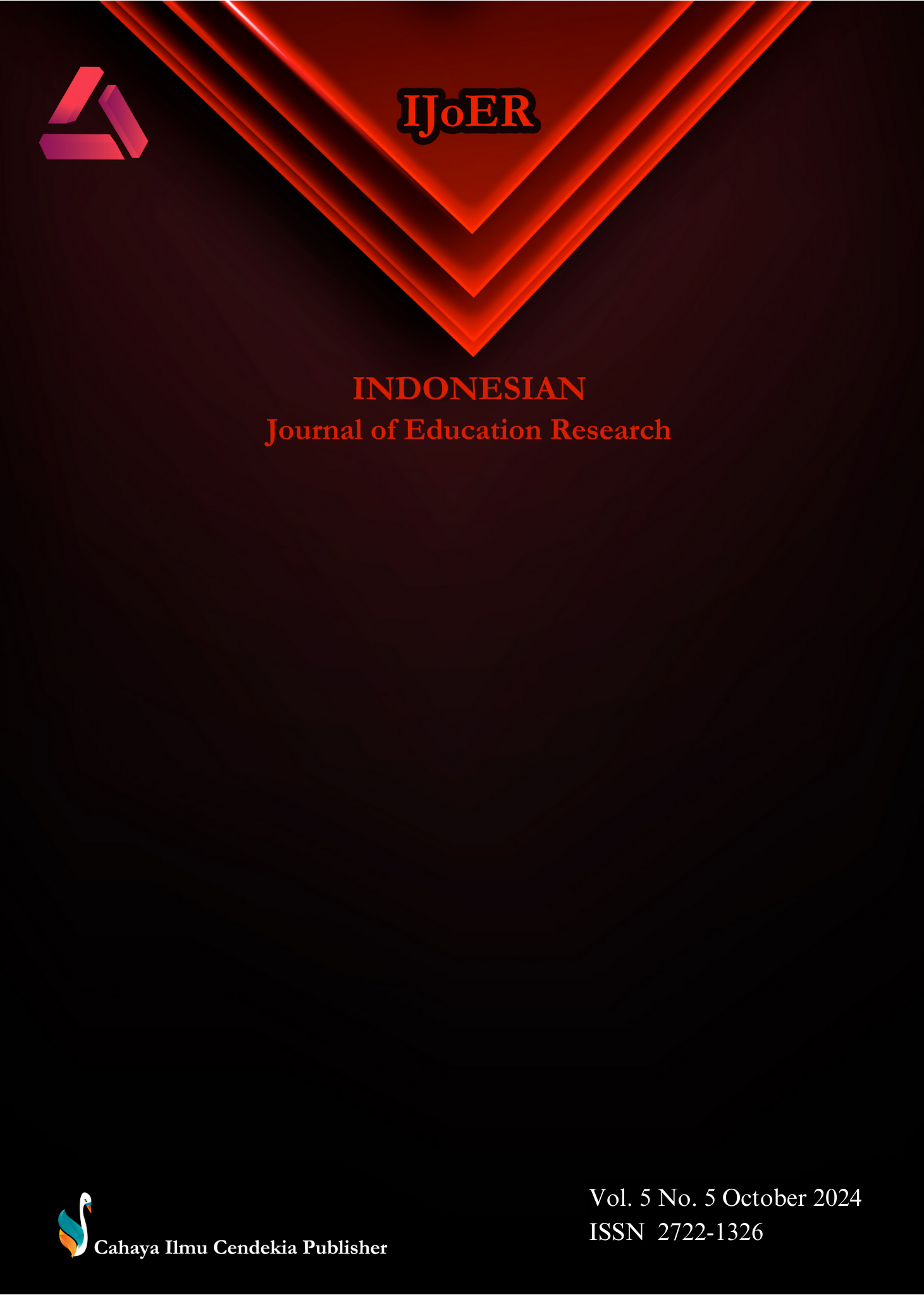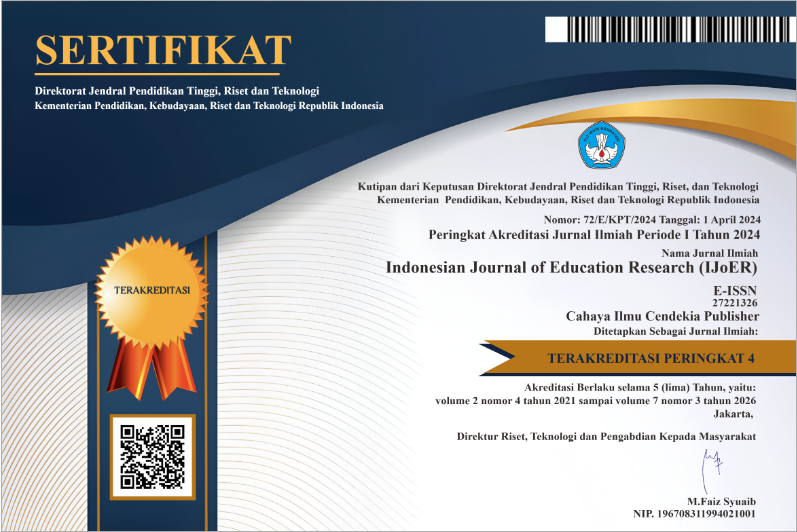Career Choice and Self-Efficacy Toward Senior High School Students’ Career Goals in the Philippines
Abstract
Purpose of the study: The study examined the career choices and self-efficacy of Senior High School students in the Philippines and how these are influenced by their demographic profiles such as age, gender, and educational strand.
Methodology: The study employed descriptive-correlational study using an adapted questionnaire with sections on demographic profiles, career choices (realistic, investigative, artistic, social, enterprising, and conventional), and self-efficacy (Career Development Self-Efficacy Inventory. Data were collected from 308 Grade 12 students through Google Forms, analyzed using Statistical Package for Social Sciences, and involved ethics review and informed consent.
Main Findings: Senior High School strand significantly correlates with career choices and self-efficacy. Age and gender show no significantly impact on career preferences or self-efficacy. Students demonstrate high self-efficacy in career goal-setting and training selection.
Novelty/Originality of this study: This study provided new insights into how Senior High School strands influence students’ career choices and self-efficacy, offering targeted recommendations for career guidance programs and advancing understanding of career development in the Philippine educational context.
References
C. G. Mokher and A. A. C. Mella-Alcazar, “Improving education pathways: collaboration supporting transitions from K-12 to postsecondary education in the Philippines,” Int. J. Educ. Dev., vol. 106, 2024. doi: 10.1016/j.ijedudev.2024.103003
K. M. Quinlan and K. A. Renninger, “Rethinking employability: how students build on interest in a subject to plan a career,” High. Educ., vol. 84, pp. 863-883, 2022. doi: 10.1007/s10734-021-00804-6
A. L. Presti, V. Capone, A. Aversano, and J. Akkermans, “Career competencies and career success: on the roles of employability activities and academic satisfaction during the school-to-work transition,” J. Career Dev., vol. 49, pp. 107-125, 2022. doi: 10.1177/0894845321992536
I. Gati and V. Kulcsár, “Making better career decisions: from challenges to opportunities,” J. Vocat. Behav., vol. 126, 2021. doi: 10.1016/j.jvb.2021.103545
C. Fernandez, M. Balijon, and I. Ancho, “Career preferences of Filipino senior high school students,” CTU J. Innov. Sustain. Dev., vol. 15, pp. 81-91, 2023. doi: 10.22144/ctujoisd.2023.053
J. L. Holland, Making Vocational Choices: A Theory of Vocational Personalities and Work Environments, 2nd ed. Odessa, FL: Psychological Assessment Resources, Inc., 1992.
L. S. Gottfredson, “Circumscription and compromise: a developmental theory of occupational aspirations,” J. Couns. Psychol., vol. 28, pp.545-579, 1981. doi: 10.1037/0022-0167.28.6.545
R. W. Lent, S. D. Brown, and K. C. Larkin, “Relation of self-efficacy expectations to academic achievement and persistence,” J. Couns. Psychol., vol. 31, pp. 356-362, 1984. doi: 10.1037/0022-0167.31.3.356
Philippine Statistics Authority, “One in every ten Filipinos aged 6 to 24 years is an out of school child and youth,” 2017.
R. C. Retes, A. M. T. Calunsag, and G. S. Baso, “Career choices for a senior high school strand,” Int. J. Res. Engineer. Sci. Manage., vol. 6, pp. 69-72, 2023. url: https://journal.ijresm.com/index.php/ijresm/article/view/2584/2537
J. T. Maestrado and J. D. Bucar, “Career guidance advocacy program and the grade 10 completers’ career choice,” Int. J. Multidisicp. Appl. Bus. Educ. Res., vol. 5, pp. 513-527, 2024. doi: 10.11594/ijmaber.05.02.12
M. C. J. Ilagan and M. M. Pesigan, “Career guidance status of freshman students: inputs for career development plan,” Asia Pac. J. Acad. Res. Soc. Sci., vol. 6, 2021. url: https://research.lpubatangas.edu.ph/wp-content/uploads/2022/09/6-APJARSS-2021-17.pdf
A. Bandura, “On the functional properties of perceived self-efficacy revisited [Editorial],” J. Manage., vol. 38, pp. 9-44, 2012. doi: 10.1177/01492063114106
N. E. Betz, “Self-efficacy theory as a basis for career assessment,” J. Career Assess., vol. 8, pp. 205-222, 2000. doi: 10.1177/10690727000080030
L. Xin, F. Tang, M. Li, and W. Zhou, “From school to work: improving graduates’ career decision-making self-efficacy,” Sustain., vol. 12, 2020. doi: 10.3390/su12030804
M. Yuen, N. C. Gysbers, R. M. Chan, P. S. Lau, T. K. Leung, E. K. Hui, et al., “Developing a career development self-efficacy instrument for Chinese adolescents in Hong Kong,” Int. J. Educ. Vocat. Guid., vol. 5, pp. 57-73, 2005. doi: 10.1007/s10775-005-2126-3
A. Mann, V. Denis, and C. Percy, Career Ready? How schools can better prepare young people for working life in the era of COVID-19, OECD, 2020.
K. A. Gee, L. Lindstrom, J. Lind, J. Gau, and C. Post, “Promoting college and career readiness among underserved adolescents: a mixed methods pilot study,” J. Adolesc., vol. 90, pp. 79-90, 2021. doi: 10.1016/j.adolescence.2021.06.002
D. E. Schultheiss, The Role of Gender in Career Development in Career Development and Counseling: Putting Theory and Research to Work, 2nd ed. Hoboken, NJ: John Wiley & Sons, Inc., 2013
Y. Wang and X. Zhou, “Empowering career counseling for all genders: insights into influencing factors and coping strategies,” Top Acad. J. Human. Soc. Sci., vol. 8, pp. 9-19, 2023. url: https://topjournals.org/index.php/TAJHSS/article/view/802/894
A. P. S. Baret, A. B. Arquino, J. T. Awyan, R. C. D. Bucod, and R. E. Ortiz, “Understanding career choices among grade 12 general academic strand students: a phenomenological approach,” Can. J. Res. Soc. Dev., vol. 1, pp. 13-18, 2024. url: https://journals.ciracq.ca/index.php/crsd/article/view/5/5
C. A. Quintos, D. G. Caballes, E. M. Gapad, and M. R. Valdez, “Exploring between SHS strand and college course mismatch: bridging the gap through school policy on intensified career guidance program,” CiiT Int. J. Data Mining Knowl. Engineer., vol. 12, pp. 156-161, 2020. url: https://www.i-scholar.in/index.php/CiiTDMKE/article/view/207480
J. Baron, “Level of academic performance among senior high school students: a differential study,” Psychol. Educ. Multidiscip. J., vol. 2, pp. 266-270, 2022. doi: 10.5281/zenodo.6659101
E. T. Batalla, “Competence of entrants and accounts on the implementation of senior high school pre-baccalaureate maritime program in Negros Occidental,” Int. J. Multidiscip. Appl. Bus. Educ. Res., vol. 4, pp. 2452-2481, 2023. doi: 10.11594/ijmaber.04.07.25
L. Cangayao and D. G. Caballes, “Perception and propensities of senior high school (SHS) students towards teaching profession: basis for recommendations in promoting education majorship for all SHS strands,” World J. Adv. Res. Rev., vol. 17, pp. 275-286, 2023. doi: 10.30574/wjarr.2023.17.2.0179
R. F. Dinampo, F. E. Factura, and J. B. Paleracio, “Correlating students’ personality types with curriculum exits in Paliparan III Senior High School,” Ignatian Int. J. Multidisicpl. Res., vol. 2, pp. 265-285, 2024. doi: 10.17613/sq9e-se72
A. L. Totor, R. L. Ohayas, and J. C. Moneva, “Financial status, parents influence, peer influence and self-choice of students in selection of strand in the senior high school, Cebu, Philippines,” Bus. Econ. Res., vol. 10, 2020. doi: 10.5296/ber.v10i1.16241
L. R. P. Magdadaro, “Passion-based vs. practical-based preference of strand in senior high school,” Int. J. Acad. Res. Bus. Soc. Sci., vol. 10, 2020. doi: 10.6007/IJARBSS/v10-i3/7031
J. N. B. Mortiz and J. Digamon, “Tertiary education readiness assessment of the pioneering senior high school graduates of the Philippine K-12 program,” Int. J. Multidiscip. Appl. Bus. Educ. Res., vol. 4, pp. 3489-3498, 2023. doi: 10.2139/ssrn.4500850
T. Agyemang and A. Adjei, “Influence of career self efficacy, gender stereotyping and career self-concept on sex-types career choice of senior high school students,” Int. J. Sci. Res. Manage., vol. 8, pp. 2321-3418, 2020. doi: 10.18535/ijsrm/v8i05.el03
M. K. Owusu, A. Owusu, E. T. Fiorgbor, and V. A. Kumah, “Dynamics influencing senior high school students’ interest in their career aspirations,” J. Afr. Interdiscip. Stud., vol. 4, pp. 103-117, 2020. url: https://kenyasocialscienceforum.wordpress.com/wp-content/uploads/2020/09/pdf-owusu-dynamics-influencing-senior-high-school-students-interest-in-their-career-aspirations.pdf
O. P. Almario, “Factors affecting the career choice decision of SHS in Central Luzon,” Cosmos Int. J. Manage., vol. 11, pp. 84-102, 2021. doi: 10.46360/cosmos.mgt.420212011
A. Nazareno, M. J. F. Lopez-Relente, G. A. Gestiada, M. P. Martinez,M. L. D. De Lara, and R. M. Roxas-Villanueva, “Factors associated with career track choice of senior high school students,” Phil. J. Sci., vol. 150, pp. 1043-1060, 2021. doi: 10.56899/150.05.15
G. J. Lara, M. D. G. Bagay, L. Garcia, S. M. Pagtanan, S. G. F. Pascual, K. D. D. Vallecera, et al., “Navigating the job market: a multiple case study on senior high school graduates in job searching,” EPRA Int. J. Multidiscip. Res., vol. 10, pp. 226-231, 2024. doi: 10.36713/epra16742
M. B. Dizon, “Personality traits, self-efficacy and career preference correlates among senior high school students in the province of Iloilo, Philippines,” J. Pos. Sch. Psychol., vol. 6, pp. 1092-1107, 2022. url: https://journalppw.com/index.php/jpsp/article/view/11265/7277
L. Talib, “Flipping a new page: unfurling career choice decision-making process of senior high school students,” Nexus. Int. J. Sci. Educ., vol. 1, 2024. doi: 10.5281/fdmmvg04
K. M. Quinlan and K. A. Renninger, “Rethinking employability: how students build on interest in a subject to plan a career,” High. Educ., vol. 84, pp. 863-883, 2022. doi: 10.1007/s10734-021-00804-6
M. Akram, “Gender differences on dimensions of vocational interest among adolescent students,” IAHRW Int. J. Soc. Sci. Rev., vol. 9, pp. 247-251. url: https://iahrw.org/product/gender-differences-on-dimensions-of-vocational-interest-among-adolescent-students/
S. O. Chukwuendo and I. C. Odogwu, “Technical and vocational education university students’ career decision self-efficacy: exploring demographics implications,” NAU J. Technol. Vocat. Educ., vol. 7, 2022. url: https://www.naujtved.com.ng/index.php/jtved/article/view/122/pdf
S. C. Aymans, T. Kortsch, and S. Kauffeld, “Gender and career optimism-the effects of gender-specific perceptions of lecturer support, career barriers and self-efficacy on career optimism,” High. Educ. Q., vol. 74, pp. 273-289, 2020. doi: 10.1111/hequ.12238
I. Carada, J. V. Alianzas, L. Palacio, and C. M. A. Palacio, “Perceived skills and employability of senior high school graduates: basis for youth employment policy,” Int. J. Soc. Sci. Human. Invent., vol. 9, pp. 6759-6766, 2022. doi: 10.18535/ijsshi/v9i01.05
Copyright (c) 2024 Evelyn T Gimarino

This work is licensed under a Creative Commons Attribution 4.0 International License.
Authors who publish with this journal agree to the following terms:
- Authors retain copyright and acknowledge that the Indonesian Journal of Education Research (IJoER) is the first publisher licensed under a Creative Commons Attribution 4.0 International License.
- Authors are able to enter into separate, additional contractual arrangements for the non-exclusive distribution of the journal's published version of the work (e.g., post it to an institutional repository or publish it in a book), with an acknowledgment of its initial publication in this journal.
- Authors are permitted and encouraged to post their work online (e.g., in institutional repositories or on their website) prior to and during the submission process, as it can lead to productive exchanges and earlier and greater citation of published work.







.png)
.png)




















